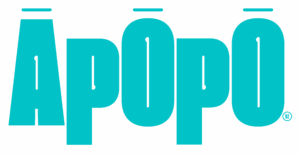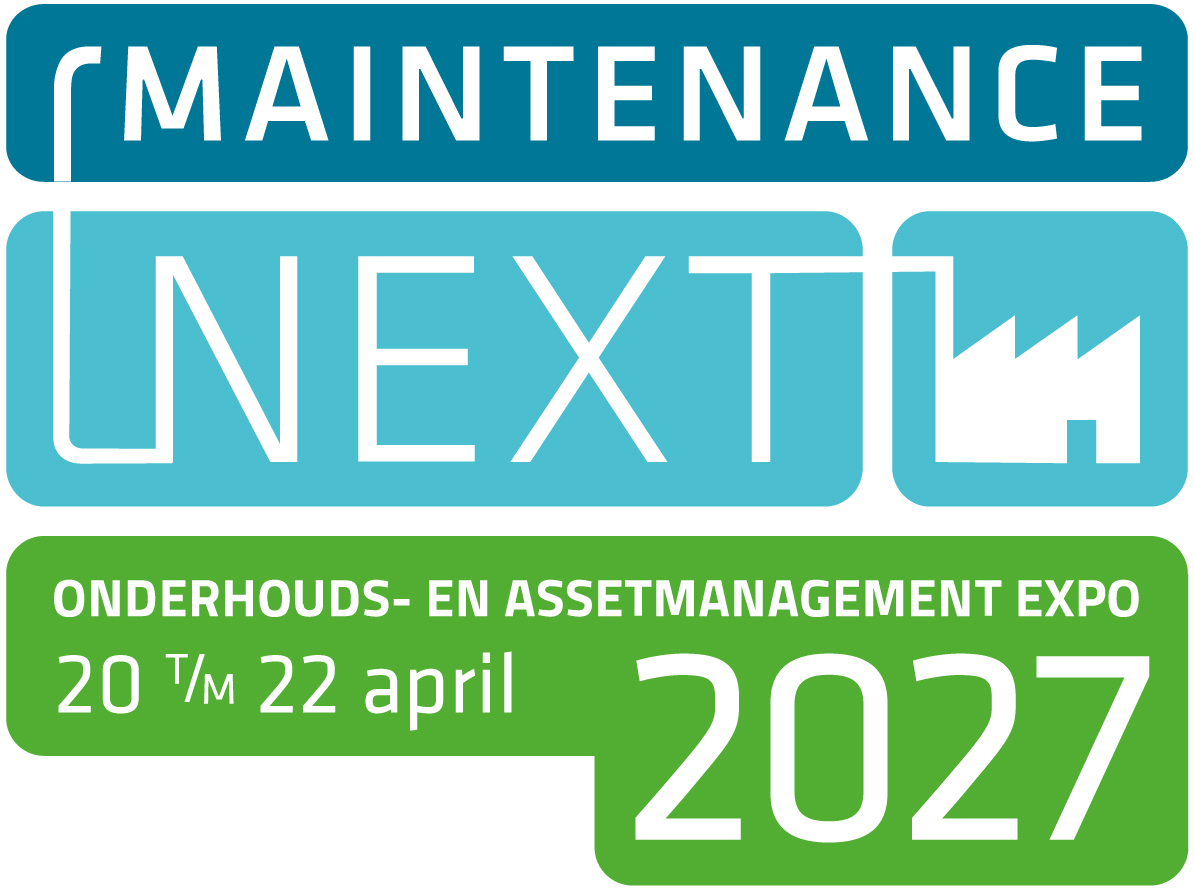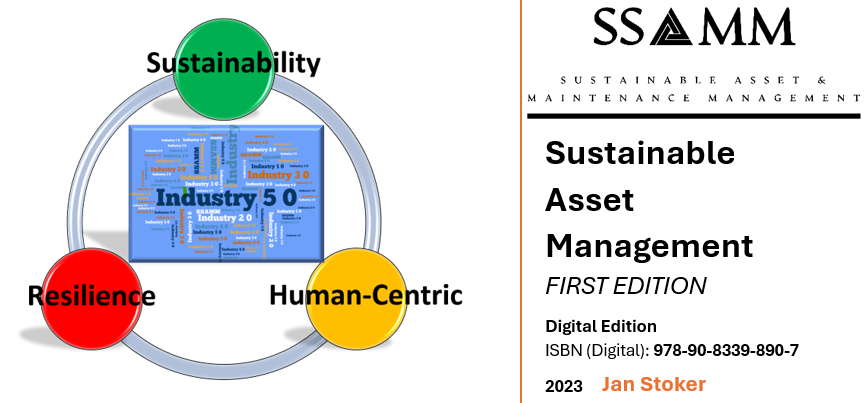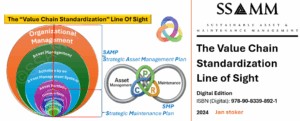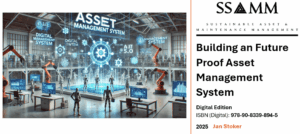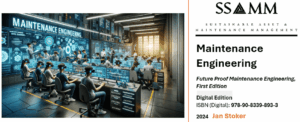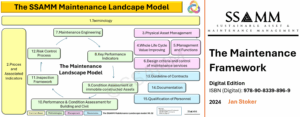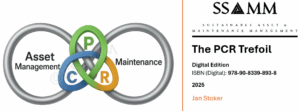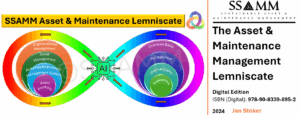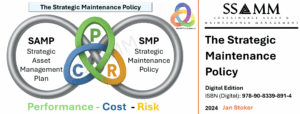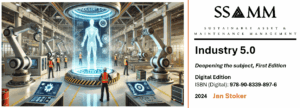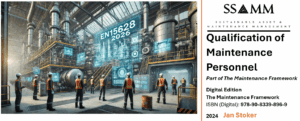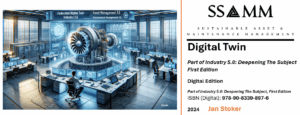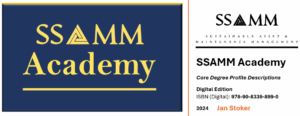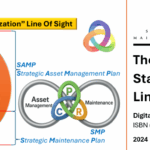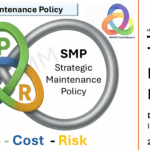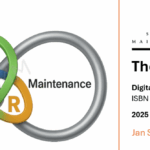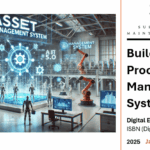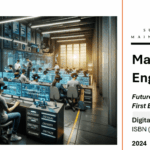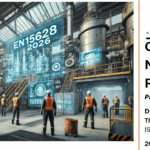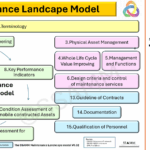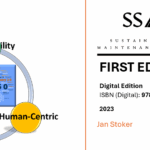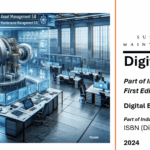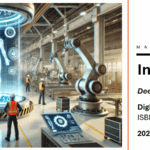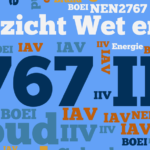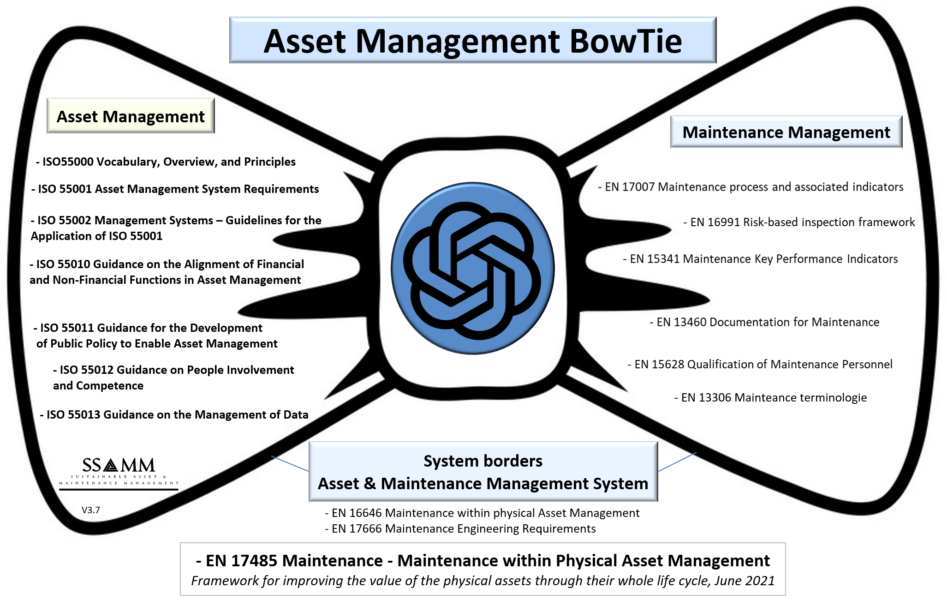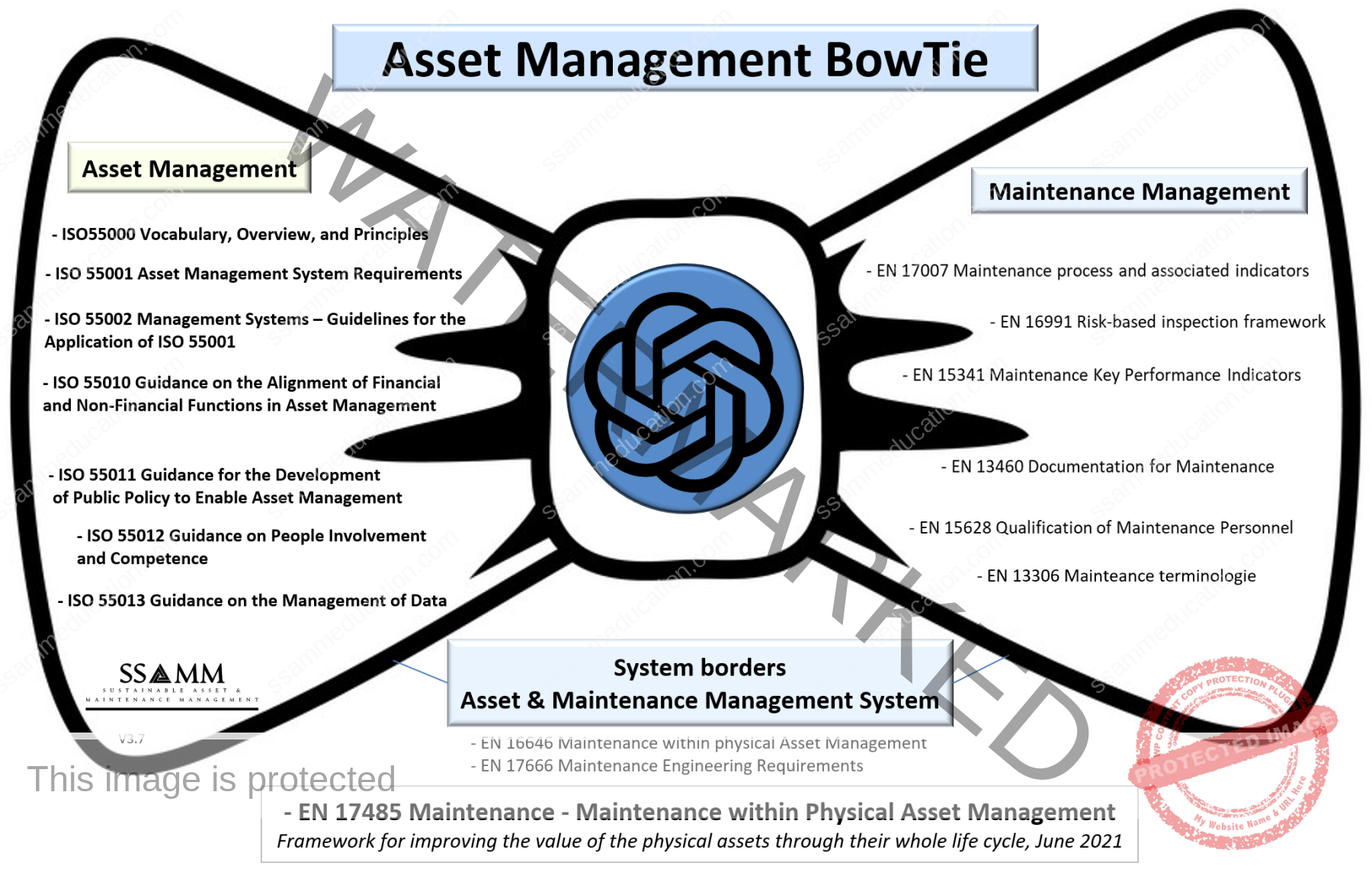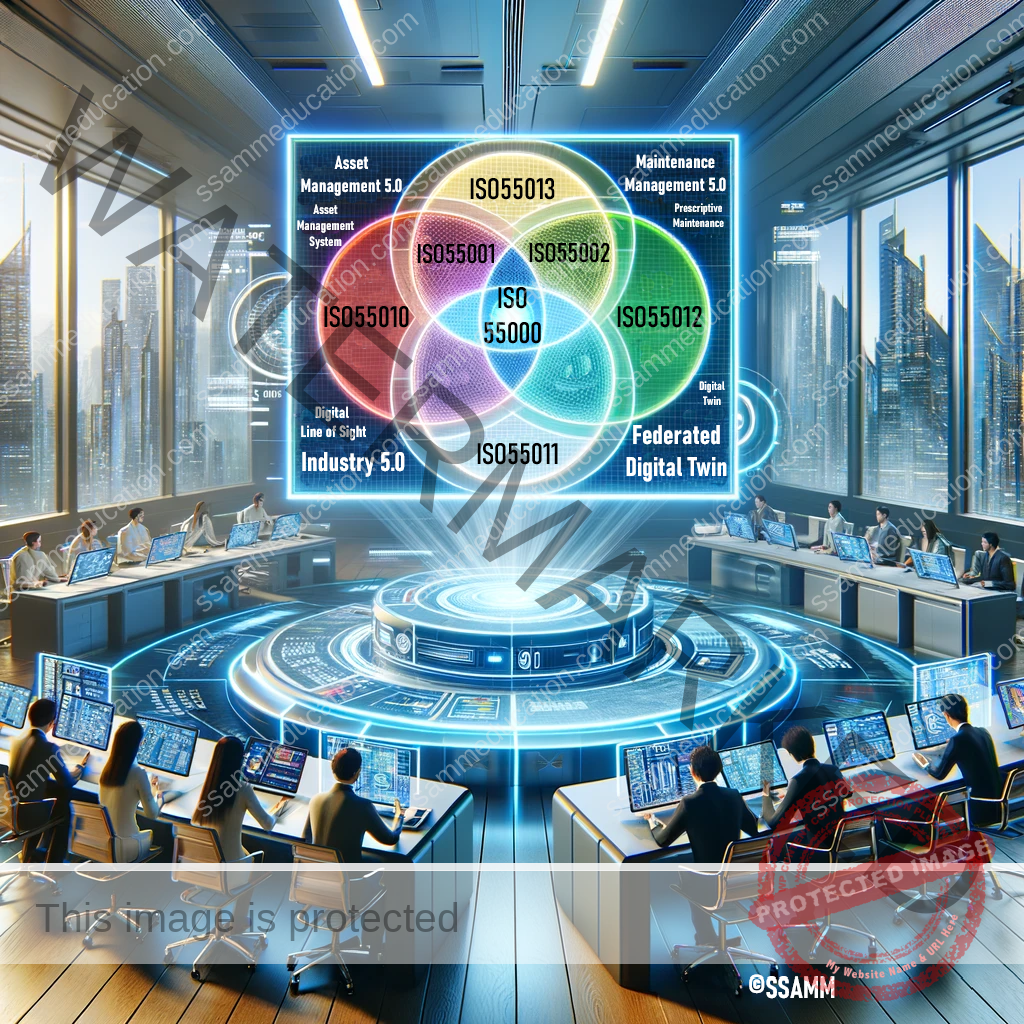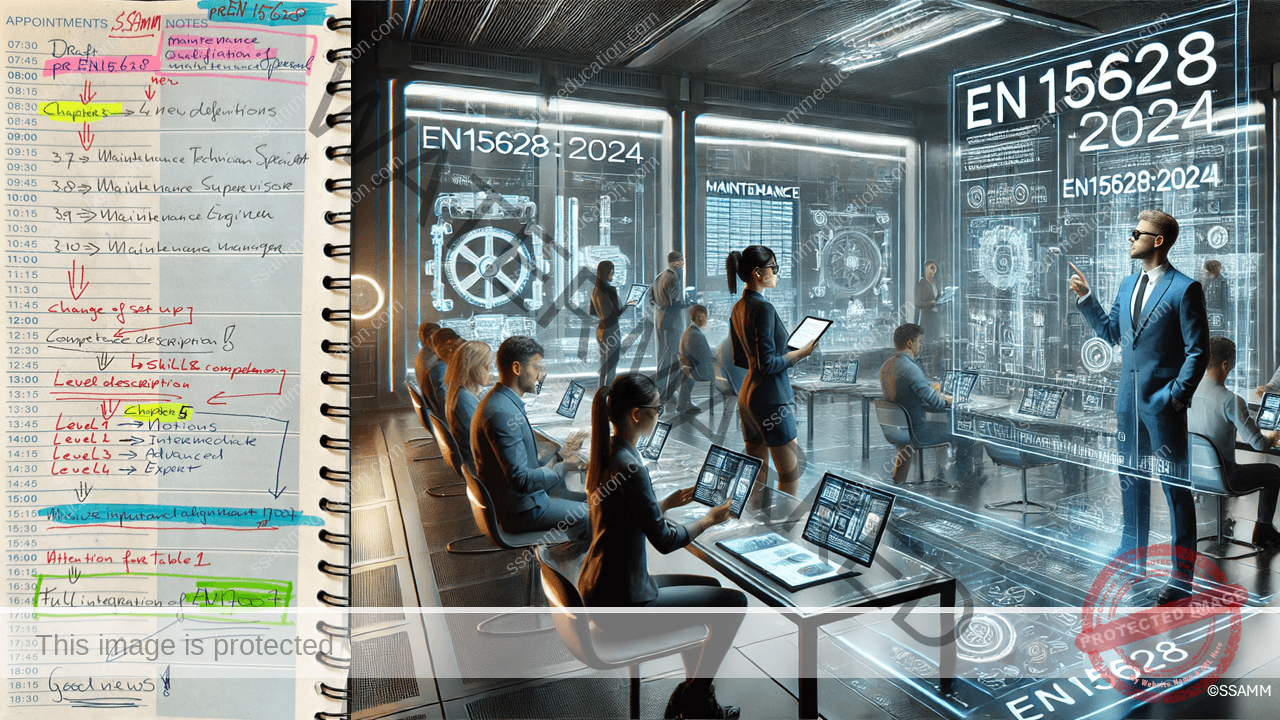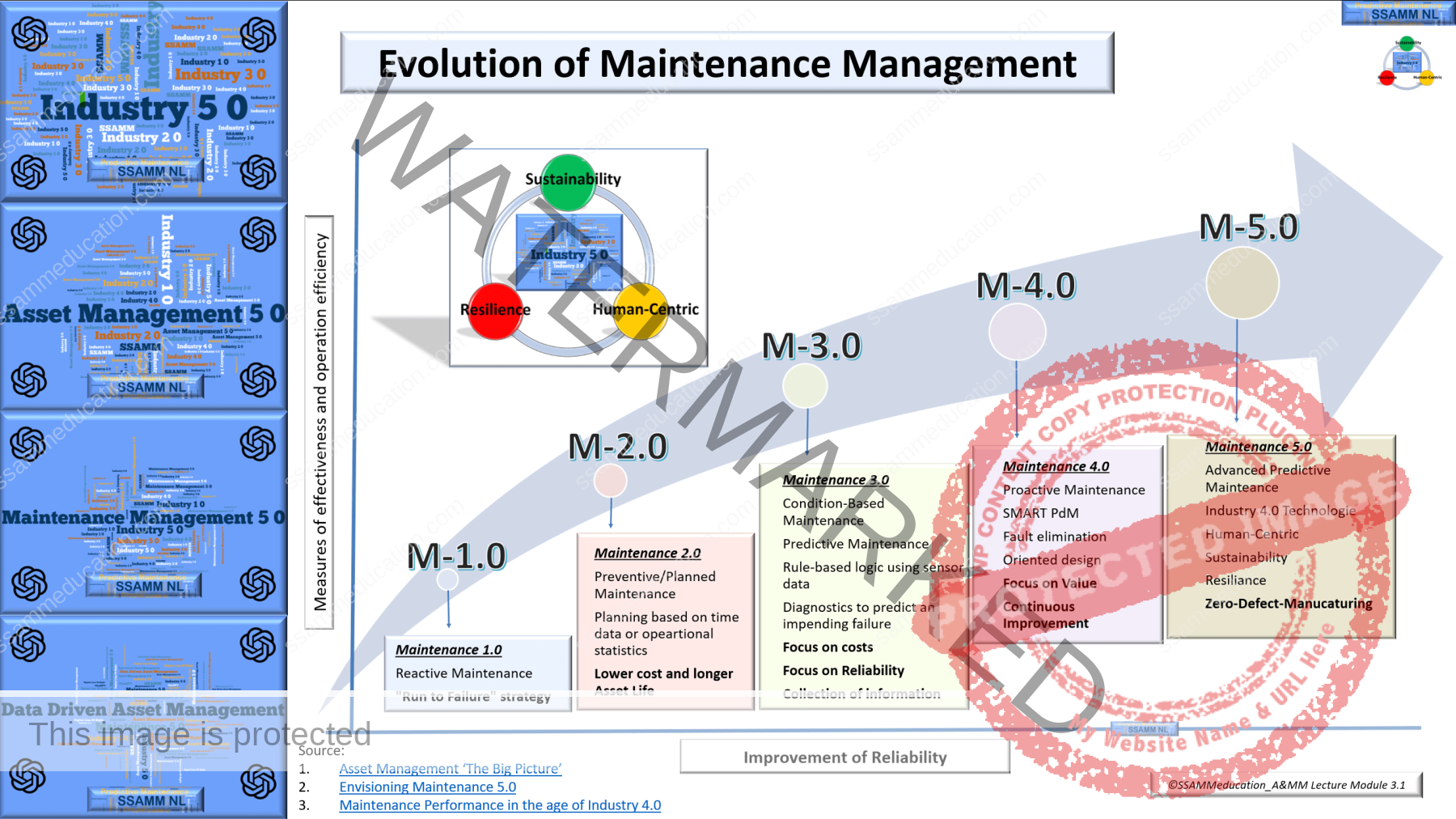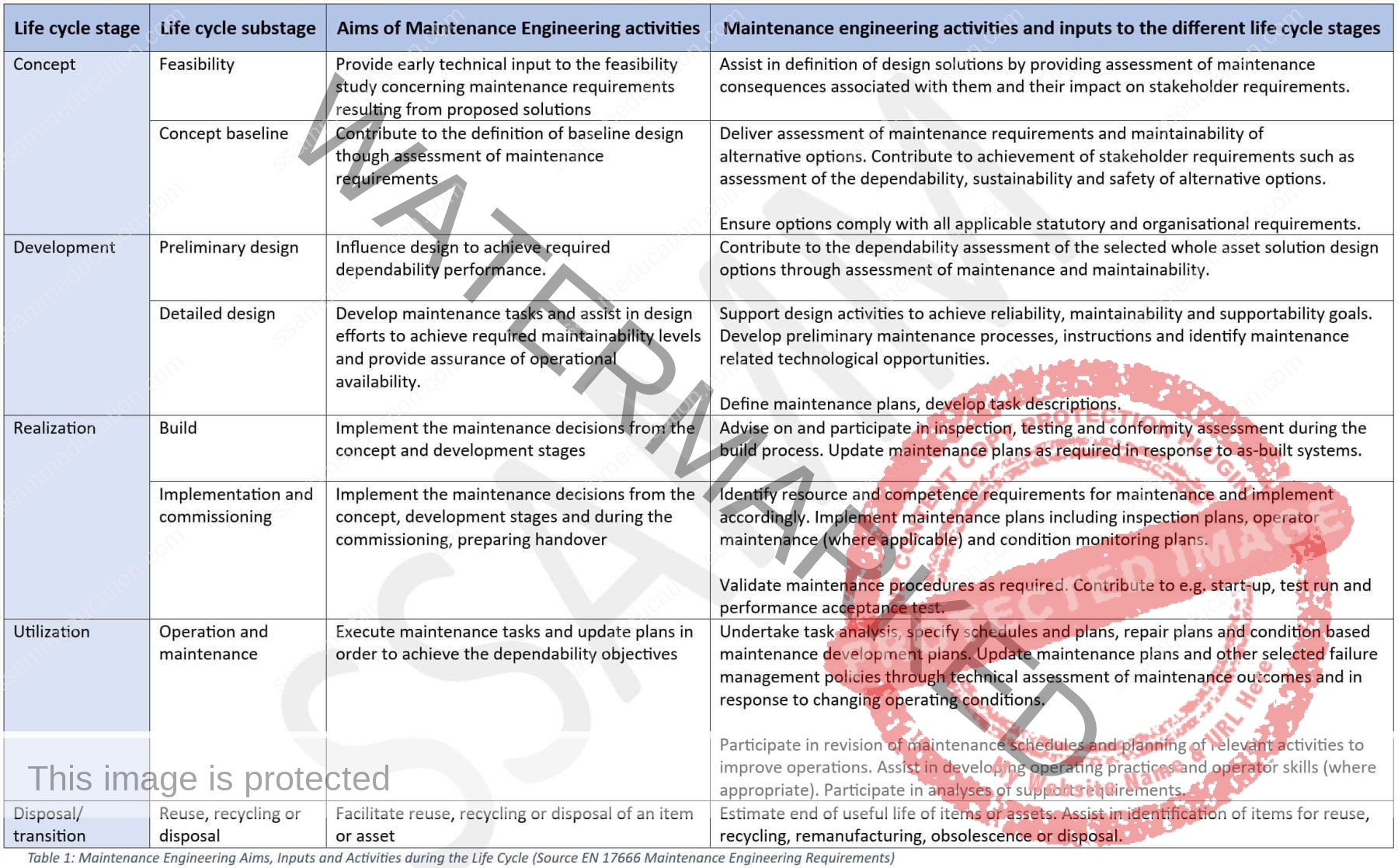In his ‘Learning Journey’ of defining Asset & Maintenance Management, lecturer/Researcher Jan Stoker of SSAMM write his finding and insights during this journey. Started in 2013 with his research, one of his goals is to understand Asset & Maintenance Management within the ISO55000 framework. Currently, his main goal is to describe and define Asset Management 5.0 based on this article. Check the related article’s on this page.
Publication 8 January 2022
Updated 15 June 2023 ME integration
Updated 20 August 2023 IR-5.0 integration
Updated 2 Januari 2024
Updated 13 May 2024
- Industry 5.0: Deepening The Subject
- The Asset & Maintenance Management Pyramid
- The Digital Line of Sight: Deepening the subject
- Maintenance Management: Deepening the subject
- Digital Twin: Deepening the subject
- The Asset Management BowTie
- Conference Article
- Article IR5.0 Human-Centric
- The IR5.0 elephant in the room
- Decision-making with AI
- AM 5.0: Balancing Risk, Performance and Value
The Asset Management BowTie, conceptualized by Jan Stoker, represents a significant innovation in the realm of asset and maintenance management. This model, aligned with the EN-17485 standard of June 2021, introduces a comprehensive framework for improving the value of physical assets throughout their entire lifecycle. The BowTie’s structure, integrating various international standards, offers a structured and holistic approach to Asset Management.
On the left side of the BowTie, the ISO 55000 series (including ISO 55000, 55001, 55002, and 55010) representing Asset Management forms the foundation, focusing on establishing and applying an effective Asset Management system. These standards collectively underscore the importance of a structured methodology for organizations to derive maximum value from their assets, aligning with overall business objectives.
The right side of the BowTie comprises standards EN 17007, EN 16991, EN 15341, EN 13460, and EN 15628, addressing diverse aspects of maintenance within physical asset management. This side emphasizes risk assessment, maintenance strategy, and performance indicators, integral to the effective management and implementation of maintenance practices.
The BowTie’s system boundaries, set by EN 16646, EN 17666, and EN 17485, create a pivotal link between maintenance management and the strategic plan of an organization. This ensures that maintenance activities are consistently aligned with broader business goals, enhancing both efficiency and effectiveness in operations.
The integration of AI into the Asset Management BowTie model represents a forward-thinking approach to Asset Management in the Industry 5.0 era. This synergy not only streamlines maintenance management processes but also paves the way for a more sustainable, efficient, and adaptive approach to managing physical assets in an increasingly automated and intelligent industrial landscape.
Jan Stoker’s Asset Management BowTie serves not only as a reference framework for integrating various standards but also as a guide for organizations in managing physical assets more effectively. It facilitates informed decision-making, balancing costs, risks, and performance, and advocates for continual improvement and sustainable business processes.
In essence, this innovative model offers a novel and integrative perspective on asset management, essential for modern organizations seeking to optimize their asset value and operational efficiency.
This article is a part of the book Sustainable Asset Management, First Edition. Click Here
Countdown SSAMM Academy Module 1
Explore the SSAMM Academy Asset Management and Maintenance Management courses.
Click Here for the Smart information page
Author: Ing. Jan Stoker MSc. MEng. Follow Jan Stoker
Introduction
The Asset Management BowTie, a concept introduced and developed by Jan Stoker, stands at the forefront of modern asset management strategies. This innovative framework harmonizes various international standards, encapsulated within the EN-17485 standard, to provide a comprehensive system for managing physical assets effectively. The BowTie model is distinguished by its unique structure: the left side draws from the ISO 55000 series, focusing on the establishment and application of an asset management system, while the right side encompasses standards like EN 17007 and EN 16991, which delve into the intricacies of maintenance management.
Crucially, the Asset Management BowTie model is not just a static framework. It is particularly relevant in today’s rapidly evolving industrial landscape, marked by the advent of Industry 5.0 and the integration of Artificial Intelligence (AI) in asset and maintenance management.
Click to enlarge
This intersection offers new potentials for predictive maintenance, enhanced risk assessments, and smarter decision-making processes. The BowTie model, thus, becomes a pivotal tool in aligning asset management strategies with the goals of customization, sustainability, and efficient operation in the Industry 5.0 era.
1.1 ISO 550XX 2024 Update: Asset Management Bowtie Left Side
The 2024 update to the ISO 550XX series represents a significant advancement in asset management standards. These updates encompass seven key standards, each providing critical guidance and requirements for optimizing asset management practices. The revised standards offer a more comprehensive and detailed framework, facilitating better decision-making, efficiency, and alignment with organizational objectives. This update is designed to help organizations manage their assets more effectively, ensuring long-term value creation and sustainability.
1.1.1 ISO 55000: Asset Management – Vocabulary, Overview, and Principles
ISO 55000 provides an essential overview of asset management, detailing its principles and expected benefits. It introduces the asset management system and relevant terminology, setting the context for the implementation of ISO 55001 and ISO 55002. This standard is foundational, ensuring that everyone in the organization shares a common understanding of key concepts and terms. It outlines the core principles of asset management, including value creation, risk management, and life cycle thinking, establishing a baseline for all subsequent standards in the series. By adopting these principles, organizations can ensure a cohesive approach to managing their assets, aligning with broader strategic goals and improving overall performance.
1.1.2 ISO 55001: Asset Management – Asset Management System Requirements
ISO 55001 outlines specific requirements for an asset management system, offering a structured framework for its establishment, implementation, maintenance, and continual improvement. It is applicable to organizations of any size and type, enabling them to systematically manage their assets in a way that supports their strategic objectives. The standard emphasizes the importance of aligning asset management with organizational goals, ensuring that asset-related decisions are made consistently and transparently. It also addresses the integration of the asset management system with other management systems within the organization, fostering a unified approach that enhances efficiency and effectiveness across all operations.
1.1.3 ISO 55002: Asset Management – Management Systems – Guidelines for the Application of ISO 55001
ISO 55002 provides detailed guidelines for applying the requirements of ISO 55001, helping organizations tailor their asset management systems to meet their unique needs and contexts. This standard offers practical advice on implementing ISO 55001, including examples and best practices. It guides organizations in interpreting the requirements and applying them effectively, considering factors such as the type of assets, the industry sector, and the specific challenges they face. ISO 55002 helps organizations to customize their asset management approaches, ensuring they are both effective and efficient. It also provides insights into how to integrate asset management processes with other business functions, promoting a holistic and coordinated approach to asset management.
1.1.4 ISO 55010: Asset Management – Guidance on the Alignment of Financial and Non-Financial Functions in Asset Management
ISO 55010 offers guidance on aligning financial and non-financial functions, ensuring that asset management decisions are both financially sound and supportive of organizational objectives. This alignment is crucial for achieving a holistic approach to asset management, where financial considerations such as budgeting, investment, and cost management are integrated with operational and technical aspects. The standard emphasizes the importance of communication and collaboration between different functions within the organization, promoting a unified approach to asset management that maximizes value and minimizes risk. By fostering better alignment, organizations can improve resource allocation, enhance decision-making, and achieve greater synergy between their financial and operational activities.
1.1.5 ISO 55011: Asset Management – Guidance for the Development of Public Policy to Enable Asset Management
ISO 55011 provides advice on developing public policies that support and enable effective asset management, particularly valuable for policymakers and public sector organizations. This standard addresses the role of government and regulatory bodies in creating an enabling environment for asset management. It offers guidance on policy instruments that can promote best practices, improve infrastructure resilience, and ensure sustainable asset management. ISO 55011 also highlights the importance of stakeholder engagement and the need for policies that are adaptable to changing circumstances and emerging challenges. By implementing supportive public policies, governments can enhance the effectiveness of asset management practices, contributing to economic growth, environmental sustainability, and social well-being.
Click To Enlarge
1.1.6 ISO 55012: Asset Management – Guidance on People Involvement and Competence
ISO 55012 emphasizes the importance of engaging and developing the competence of personnel involved in asset management activities, ensuring they have the necessary skills and knowledge to contribute effectively. This standard focuses on the human element of asset management, recognizing that the success of an asset management system depends heavily on the people who implement it. It provides guidance on training, development, and competency assessment, ensuring that personnel at all levels are equipped to fulfill their roles. ISO 55012 also addresses leadership and organizational culture, promoting a commitment to continuous improvement and excellence. By fostering a culture of competence and engagement, organizations can enhance their asset management performance, drive innovation, and achieve their strategic objectives.
1.1.7 ISO 55013: Asset Management – Guidance on the Management of Data
ISO 55013 focuses on the management of data in asset management. It provides guidelines for ensuring that data used in asset management is accurate, reliable, and effectively utilized to inform decision-making. This standard addresses the critical role of data in asset management, covering aspects such as data quality, data governance, and data integration. It emphasizes the need for robust data management practices to support the asset management system, ensuring that decisions are based on accurate and timely information. ISO 55013 also highlights the importance of data security and privacy, ensuring that data is protected throughout its life cycle. By implementing effective data management practices, organizations can enhance their decision-making capabilities, improve operational efficiency, and achieve better outcomes from their asset management activities.
This update to the ISO 550XX series enhances the framework and guidance provided to organizations, enabling more effective and efficient asset management practices. The updates are designed to help organizations navigate the complexities of asset management, driving continuous improvement and long-term success.For more detailed information, please stay tuned with the SSAMM-Framework fur updated during 2024.
2. AM-BowTie Right side: Maintenance Management
These standards include EN 17007, EN 16991, EN 15341, EN 13460, EN 13306 and EN 15628, each playing a distinct role in enhancing the maintenance aspect of asset management.
EN 17007 provides guidelines on risk-based inspection. This standard is pivotal for organizations aiming to integrate a risk-based approach into their maintenance strategies. By implementing EN 17007, organizations can prioritize maintenance activities based on the risk profile of assets, thereby optimizing maintenance resources and improving safety and reliability.
The EN16991 standard provides guidelines for Risk-Based Inspection and Maintenance (RBIM) in various industries, focusing primarily on Risk-Based Inspection (RBI). It emerged from the global shift towards risk-based inspection approaches since the late 1990s, aiming to enhance production time, reduce unscheduled downtime, and improve safety. This standard offers a comprehensive Risk-Based Inspection Framework (RBIF), applying multidisciplinary engineering analysis to ensure targets related to health, safety, business, and environment are met. The RBIF principles include planning work products for risk management, defining an RBI framework in line with good engineering practices, and complying with legal regulations. The RBI process involves evaluating inspection and maintenance needs, ensuring consistency, and simplifying documentation.
Risk Assessment methods, Click to Enlarge
EN 15341 focuses on maintenance Key Performance Indicators (KPIs). This standard is crucial in establishing a set of performance metrics to evaluate the effectiveness and efficiency of maintenance activities. By aligning with EN 15341, organizations can track and measure the performance of their maintenance processes, enabling continuous improvement and alignment with organizational objectives.
EN 13306 This European Standard specifies generic terms and definitions for the technical, administrative and managerial areas of maintenance. It may not be applicable to terms which are used for the maintenance of software only.
EN 13460 provides guidelines for preparing maintenance documentation. This standard is instrumental for organizations in creating comprehensive maintenance documentation, which is essential for the proper execution and management of maintenance activities. This documentation serves as a reference for maintenance procedures, schedules, and practices, ensuring consistency and reliability in maintenance operations.
Lastly, EN 15628 addresses the qualification of maintenance personnel. This standard underscores the importance of having skilled and qualified personnel for maintenance activities. It sets out the criteria for the education, training, and qualification of maintenance staff, ensuring that they are equipped with the necessary skills and knowledge to carry out maintenance tasks effectively and safely.
In summary, the right side of the Asset Management BowTie embodies a comprehensive approach to maintenance management, integrating various standards that collectively enhance the effectiveness, efficiency, and safety of maintenance processes. This side of the BowTie is crucial in ensuring that maintenance activities are not only aligned with the overall asset management strategy but also conducted in a manner that maximizes asset performance, minimizes risks, and adheres to best practices in maintenance management.
2.1 An Analysis of the prEN 15628: Advancements in Maintenance Personnel Qualifications and Skills
2.1.1 Structural Alignment with EN 17007
One of the most notable changes in prEN 15628:2024 is the revision of its structure to align with EN 17007. This alignment is a strategic move to ensure consistency across standards that govern maintenance activities. EN 17007 provides a generic description of the maintenance process, which is a critical reference point for determining the skills and knowledge required for maintenance personnel. By restructuring prEN 15628:2024 in this way, the standard now offers a more cohesive and integrated framework for understanding and implementing maintenance processes within organizations.
The revision underscores the importance of a holistic approach to maintenance, where the process is not only about the execution of tasks but also about understanding the broader context in which these tasks are performed. This integration with EN 17007 ensures that maintenance personnel are equipped with the necessary competencies to operate effectively within the maintenance process, bridging the gap between theory and practice.
2.1.2 Specification of Knowledge Requirements
Another significant enhancement in prEN 15628:2024 is the explicit determination of knowledge requirements according to the maintenance actions to be performed. This development marks a shift from a more generalized approach to a more targeted specification of what maintenance personnel need to know and understand. The standard now delineates the knowledge requirements based on the types of maintenance actions—management, realization, and support—as categorized in EN 17007.
This approach ensures that the competencies of maintenance personnel are directly aligned with the tasks they are expected to perform, fostering a more precise and effective maintenance practice. The emphasis on knowledge requirements tailored to specific industrial sectors also allows organizations to customize their training and development programs, ensuring that their personnel possess the relevant skills and expertise needed in their particular operational context.
2.1.3 Incorporation of the European Qualifications Framework (EQF)
The prEN 15628:2024 fully incorporates the recommendations of the European Qualifications Framework (EQF), reflecting a broader European trend towards standardizing qualifications and competencies across industries. The EQF provides a common reference framework to compare the qualifications of different countries, thereby facilitating mobility and recognition of qualifications across Europe.
By aligning with the EQF, prEN 15628:2024 ensures that the qualifications and competencies it defines are comparable and recognized across the European Union. This alignment also supports lifelong learning by providing a clear pathway for maintenance personnel to progress through different levels of expertise, from basic knowledge to advanced and expert levels. The incorporation of the EQF thus enhances the credibility and portability of qualifications, enabling maintenance professionals to pursue career advancement across borders.
2.1.4 New Definitions of Maintenance Roles
The introduction of new definitions for key maintenance roles in prEN 15628:2024 is another critical development. These definitions—maintenance technician specialist, maintenance supervisor, maintenance engineer, and maintenance manager—clarify the responsibilities and expectations associated with each role, providing a clear framework for organizations to structure their maintenance teams.
-
Maintenance Technician Specialist (3.7): This role focuses on the availability and physical condition of equipment, emphasizing the importance of preventive and corrective maintenance tasks performed in compliance with laws, directives, and best practices.
-
Maintenance Supervisor (3.8): The maintenance supervisor is responsible for overseeing the activities of technicians and subcontractors, ensuring that maintenance operations are carried out effectively and in close collaboration with other stakeholders.
-
Maintenance Engineer (3.9): This role applies engineering concepts to maintenance, focusing on ensuring proper operation and resolving maintenance issues while guiding other stakeholders to achieve organizational objectives.
-
Maintenance Manager (3.10): The maintenance manager is tasked with defining the maintenance policy and strategy, directing and coordinating activities to achieve the desired outcomes as outlined in the maintenance strategy.
These definitions provide a more structured and hierarchical understanding of maintenance roles, facilitating better communication, role clarity, and division of responsibilities within maintenance teams.
2.1.5 New Chapter on Skills and Knowledge
The addition of a new chapter on skills and knowledge in prEN 15628:2024 is a significant enhancement, providing detailed guidance on the competencies required for different maintenance roles. This chapter categorizes the skills and knowledge according to the process families of EN 17007—management, realization, and support—and outlines the expected level of expertise for technicians, supervisors, engineers, and managers.
The classification of skills and knowledge into levels—from basic (level 1) to expert (level 4)—offers a clear framework for assessing and developing the competencies of maintenance personnel. This structure allows organizations to tailor their training and development programs to the specific needs of their staff, ensuring that each role is equipped with the appropriate level of expertise.
The table in this chapter (Table 1) is particularly valuable as it provides a detailed breakdown of the expected skills and knowledge for each role, offering a practical tool for organizations to use in defining their own requirements. This approach supports the customization of training and development programs, ensuring that maintenance personnel are adequately prepared to meet the demands of their roles.
Wrap Up
The prEN 15628:2024 represents a significant advancement in the standardization of maintenance personnel qualifications and skills in Europe. By aligning with EN 17007 and the EQF, and by introducing new definitions and a detailed chapter on skills and knowledge, this revision provides a more comprehensive and practical framework for organizations to ensure the competence of their maintenance teams.
These changes are not only technical updates but reflect a deeper understanding of the complexities of modern maintenance practices. The prEN 15628:2024 is a crucial tool for organizations striving to enhance their maintenance operations, offering clear guidance on the roles, responsibilities, and competencies required to achieve excellence in maintenance.
Deepening this subject: Sustainable Asset Management, First Edition. Click Here
3. The BowTie Bridge: Connecting the Left & Right side of the BowTie
The center or connecting point of Jan Stoker’s Asset Management BowTie model, where the left and right sides converge, is epitomized by the integration of EN-16646, EN-17666, and EN-17485 standards. This pivotal juncture represents the harmonization of asset management system standards (as represented on the left side) with detailed maintenance standards (as illustrated on the right side), forming a comprehensive asset management strategy.
EN-16646, titled “Maintenance – Maintenance within physical asset management,” plays a fundamental role in bridging the gap between the broader asset management system and specific maintenance activities. This standard provides a general framework that delineates the role and tasks of maintenance within the larger realm of physical asset management. It emphasizes the need for maintenance to be fully integrated and aligned with the organization’s strategic asset management objectives, ensuring that maintenance activities support and enhance the overall value derived from physical assets.
EN-17666, focusing on maintenance engineering, further strengthens this connection by addressing the lifecycle activities associated with ensuring that an item fulfills its required functions in a safe, sustainable, and cost-effective manner. It underscores the dynamic nature of maintenance activities throughout the asset’s lifecycle, highlighting the need for maintenance engineering to be responsive to changes in the asset’s condition and operational requirements.
EN-17485, “Maintenance within physical asset management – Framework for improving the value of the physical assets through their whole life cycle,” is instrumental in this confluence. It introduces methods and procedures for integrating maintenance within the broader scope of physical asset management at all organizational levels. EN-17485 advises organizations on implementing the requirements presented in the ISO 55001 standard, thereby creating a methodological framework that links various maintenance standards with the ISO 5500x series. This standard is crucial in providing a practical starting point for more detailed documents and guidelines for specific sub-functions of maintenance, ensuring a cohesive approach to asset management.
In essence, the center of the Asset Management BowTie, marked by these standards, symbolizes the integration of strategic asset management plans with tactical maintenance activities. This convergence ensures that maintenance strategies are not developed in isolation but are deeply entrenched within the broader asset management goals and objectives of the organization. The result is a holistic asset management approach that effectively balances and aligns the various facets of asset management, from strategic planning to practical maintenance execution, within the context of the organization’s overarching objectives.
Deepening this subject: Sustainable Asset Management, First Edition. Click Here
4. The EN-17485: Deepening the subject
The EN-17485 standard, titled “Maintenance within physical asset management – Framework for improving the value of the physical assets through their whole life cycle,” represents a significant milestone in the evolution of asset management practices. This standard addresses a crucial aspect of asset management: the integration and enhancement of maintenance within the broader framework of physical asset management.
4.1 Key Objectives of EN-17485
EN-17485 aims to systematize the link between business objectives, physical asset management, and maintenance activities. It recognizes that maintenance is not just a support function but a core component of effective asset management. The standard’s objectives include:
-
Creating Systematic Links: By establishing a structured approach, EN-17485 aims to create a clear connection between an organization’s business goals, its asset management strategies, and its maintenance activities.
-
Promoting Cross-Functional Cooperation: The standard emphasizes the importance of collaboration across different organizational functions, recognizing that effective asset management requires input from various departments.
-
Enhancing Decision-Making Transparency: It advocates for transparent decision-making processes in asset management, ensuring that all stakeholders understand how and why decisions are made.
-
Addressing Uncertainty Management: One of the key aims is to improve the quality of decision-making by effectively managing uncertainties associated with asset management and maintenance.
-
Improving Information Management: EN-17485 also focuses on enhancing the management of information related to asset maintenance, recognizing the role of accurate data in making informed decisions.
4.2 Methodological Framework
EN-17485 introduces a methodological framework that advises organizations on implementing the requirements of ISO 55001 (the standard for asset management systems). It bridges the gap between the high-level guidance provided by the ISO 5500x series and the detailed, practical aspects of maintenance management. The standard provides guidance on various topics, including:
- The development and documentation of maintenance requirements.
- The role of maintenance in ensuring that assets fulfill their required functions.
- How maintenance engineering activities should evolve throughout an asset’s lifecycle.
- The influence of internal and external factors on maintenance strategies.
4.3 Implications for Organizations
For organizations, adherence to EN-17485 offers several benefits:
- Enhanced Asset Value: By integrating maintenance strategies within the overall asset management framework, organizations can improve the value derived from their physical assets.
- Lifecycle Cost Optimization: The standard aids in making informed decisions that balance costs, risks, and performance across the asset’s lifecycle.
- Sustainable Practices: It promotes sustainability in asset management by encouraging practices that extend the life of assets and optimize their use.
- Compliance and Credibility: Following EN-17485 can enhance an organization’s credibility with stakeholders by demonstrating a commitment to best practices in asset management.
The EN-17485 plays a pivotal role in modernizing maintenance management. It guides organizations in aligning their maintenance strategies with broader asset management objectives, thereby ensuring that assets are managed effectively throughout their lifecycle. The standard is a critical tool for organizations looking to optimize their asset performance, manage risks, and achieve sustainability in their asset management practices.
5. The Asset management BowTie 5.0: Deepening the Subject
In an era where Industry 5.0 and Artificial Intelligence (AI) are reshaping the landscape of Asset and Maintenance Management, the Asset Management BowTie model, emerges as a tool of immense potential. This article explores the possibilities of the BowTie model in the context of Industry 5.0 and AI, illustrating how it can be a partner in revolutionizing the field of Asset & Maintenance Management.
Maintenance management 5.0 Click Here to enlarge Full Article Click Here
5.1 The Evolution to BowTie 5.0
The original Asset Management BowTie, rooted in the EN-17485 standard and integrating the ISO 55000 series with various EN maintenance standards, provided a holistic approach to managing physical assets. As we transition into Industry 5.0, this model evolves into what can be termed as BowTie 5.0 – a version that synergizes with AI technologies to foster a more intelligent, efficient, and sustainable approach to asset management.
Asset Management BowTie Click to enlarge: See Body of thoughts AM-BowTie Click Here
5.2 AI as a Partner in the BowTie Model
Incorporating AI into the BowTie model enhances its capabilities significantly:
-
Predictive Maintenance: AI algorithms can analyze historical data and predict potential failures before they occur. This integration into the BowTie model means maintenance can be proactive rather than reactive, reducing downtime and extending asset life.
-
Risk Assessment and Management: AI can process vast datasets to identify risk patterns and predict outcomes, enabling better risk management strategies within the BowTie framework.
-
Efficient Resource Allocation: AI-driven insights allow for more efficient allocation of resources, ensuring that maintenance efforts are targeted where they are most needed, in line with the strategies outlined in the BowTie model.
-
Customization and Personalization: In Industry 5.0, the emphasis is on bespoke solutions. AI enables the BowTie model to be more adaptive and responsive to specific organizational needs, aligning maintenance strategies with unique operational requirements.
-
Sustainability and Lifecycle Management: AI can optimize the lifecycle of assets by monitoring their performance and suggesting improvements, aligning with the sustainable practices advocated by Industry 5.0.
5.4 The BowTie and the Strategical Asset Management Plan (SAMP)
The SAMP is described in both the ISO55000 paragraph 2.5.3.4 and EN17485 paragraph 4.1 as a critical document that outlines an organization’s strategic approach to managing its assets. It provides a clear understanding of the organization’s asset management goals, objectives, and strategies, along with the necessary resources and actions required to achieve them. This plan is essential for organizations looking to optimize their asset utilization, minimize risks and costs, and ultimately improve their overall performance.
Defenition SAMP:
Documented information that specifies how organizational objectives are to be converte into asset management objectives, the approach for developing asset management plans, and the role of the asset management system in supporting achievement of the Asset Management objectives
Source: ISO55000:2.5.4.3
However, while the SAMP sets out the strategic direction for asset management, it does not necessarily address how to achieve these goals and objectives. This is where the Asset Management BowTie comes in as a complementary tool. It provides a visual representation of potential hazards that may arise in an organization’s asset management system, along with their corresponding consequences and controls. It helps bridge the gap between strategic planning and practical implementation by identifying specific risks and their associated mitigation measures.
By incorporating the Asset Management BowTie into the SAMP, organizations can develop a more comprehensive and robust plan that not only sets out their strategic objectives but also outlines how they will be achieved. This approach aligns with the EN17485 standard, which emphasizes the need for a risk-based approach to asset management. By integrating the BowTie into the SAMP, organizations can demonstrate their commitment to managing all risks associated with their assets throughout their entire life cycle.
Ultimately, by utilizing both the SAMP and Asset Management BowTie, organizations can create a more holistic and effective asset management system that aligns with industry standards and best practices. This will not only help organizations achieve their objectives and improve their overall performance, but it will also enhance their reputation as a responsible and trustworthy organization.
In today’s rapidly evolving business landscape, where the effective management of assets is crucial for success, having a well-defined SAMP and utilizing tools like the Asset Management BowTie are essential for long-term sustainability. By taking a proactive and strategic approach to asset management, organizations can minimize risks and maximize opportunities, leading to increased efficiency, cost savings, and improved decision-making.
helpful tool in this process.agement plans.
As we transition into the era of Industry 5.0, where human ingenuity is harmoniously integrated with technological advancements, the impact of Artificial Intelligence (AI) in devising Strategic Asset Management Plans (SAMPs) is more significant than ever. AI, with its capability to evaluate massive data sets and discern patterns, efficiently aids in assessing the status, performance, and potential risks associated with each asset.
In the context of Industry 5.0, digital twins, a key component of AI, assume a crucial role in allowing real-time monitoring and predictive maintenance of assets. This not only reduces downtime and increases productivity but also aids in extending the life span of assets, thereby optimising the return on investments.
The Asset Management BowTie, when powered by AI, serves as an invaluable tool in facilitating these processes. By connecting potential hazards to their possible consequences, the BowTie model aids in visualising complex risk scenarios that could impact the strategic asset management planning. Additionally, the AI-enhanced BowTie tool fosters a proactive risk management approach, allowing for swift identification and mitigation measures. Thus, in the era of Industry 5.0, AI’s contribution in creating robust SAMPs, especially when integrated with tools like the Asset Management BowTie, is truly transformative.
The integration of AI and the Asset Management BowTie also highlights the importance of continuous improvement in asset management. With AI constantly learning from data and providing real-time insights, it allows for a more adaptable and agile approach to SAMPs. This not only ensures efficient asset utilisation but also enables organisations to stay ahead of potential risks.
Moreover, the integration of these tools enables organizations to continually improve their asset management practices by identifying areas for enhancement through risk assessments and implementing appropriate controls. This promotes a culture of continuous improvement within the organization and ensures that assets are managed in a responsible and sustainable manner.
By adopting this approach, organizations can also achieve compliance with regulatory requirements and meet the expectations of stakeholders, including customers, shareholders, and regulators. This not only mitigates potential legal and financial risks but also enhances customer satisfaction and trust in the organization’s brand.
5.5 Challenges and Opportunities
While the integration of AI into the BowTie model presents numerous opportunities, it also brings challenges such as the need for quality data, concerns about AI interpretability, and the requirement for continuous adaptation of AI models as technology evolves.
The BowTie 5.0 model, empowered by AI, stands as a testament to the advancement in asset and maintenance management. As organizations navigate the complexities of Industry 5.0, this model offers a pathway to not only adapt but also thrive by leveraging the power of AI. By embracing this evolved model, businesses can ensure that their asset management strategies are not only efficient and effective but also future-ready.
This exploration of the BowTie model in the context of AI and Industry 5.0 opens up new horizons for how assets are managed, promising a future where maintenance is not just a necessity but a strategic advantage.
6. The BowTie and the Digital Line of Sight
The standards EN 16646 and EN 17485 build the bridge between ISO 5500x (Asset management system standards) and the EN maintenance standards. ISO 55001 states that organizations should determine e.g. the organizational context, requirements for the assets, decision criteria, strategic asset management plan and asset management plan (including maintenance). However, it does not describe how to do it.
Respectively, maintenance standards often introduce e.g. the concept of the required function or the concept of maintenance strategy, but do not explain how they have been determined. EN 17485 introduces a methodological framework which advises organizations to implement the requirements presented in ISO 55001. By doing this it creates the bridge between the several maintenance standards and ISO 5500x in order to give an applicable starting point to the more detailed documents for the specific sub-functions of maintenance (See AM-BowTie).
This insights, the Asset Management BowTie, can be added toward the Asset Management paradigm with the (Digital) Line of Sit. To add the BowTie principle, the body of thoughts of the EN-17485 can be incorporated in the Asset Management paradigm with the mentioned standards. Result is a deepened figure 1 of the ISO5500 completed with the Line(s) of Sights, the levels of information, Business, Risk Assessment and Asset & Maintenance going to decision making in balancing Costs, Risks and Performance. The Asset Management BowTie show how standards can be uses as a reference framework.
Click to enlarge: Digital Line of Sight Full Article Click Here
7. The Digital Twin and the Asset Management BowTie: Deepening the subject
In today’s fast-paced and ever-evolving industry, organizations are constantly seeking new ways to improve their risk management strategies and optimize asset performance. As a result, the combination of Asset Management BowTie with digital twins has emerged as a powerful tool for achieving these goals.
Moreover, the integration of digital twins with the Asset Management BowTie methodology allows for a more comprehensive risk assessment. By incorporating real-time data from the digital twin into the bowtie diagram, organizations can have a more accurate representation of the potential risks and consequences associated with each hazard. This not only improves the effectiveness of risk management but also enables organizations to identify and address any potential gaps in their current risk mitigation strategies.
In addition, using digital twins in Asset Management can lead to cost savings for organizations. By having a better understanding of asset performance and potential risks, organizations can optimize maintenance schedules and reduce downtime. This not only saves on maintenance costs but also increases the overall efficiency and productivity of assets.
Furthermore, digital twins also provide a platform for collaboration and communication within an organization. With real-time data accessible to all stakeholders, decision-making becomes more transparent and efficient. This allows for better coordination between different departments, leading to a more holistic approach towards Asset Management.
But digital twins are not just beneficial for organizations; they can also have a positive impact on the environment. By optimizing asset performance and reducing downtime, organizations can reduce their carbon footprint and contribute towards sustainable practices. This aligns with the growing trend of corporate social responsibility and showcases an organization’s commitment to sustainability.
Click to enlarge: classifications digital twins Full Article Click Here
In conclusion, digital twins have revolutionized asset management by providing organizations with real-time data, improving risk assessment and mitigation strategies, increasing cost savings, promoting collaboration and communication, and contributing towards sustainability. As technology continues to advance, it is evident that digital twins will play an even bigger role in optimizing asset management and driving overall organizational success. It is crucial for organizations to embrace this technology and stay ahead of the curve in order to remain competitive in today’s rapidly evolving business landscape.
Deepening this subject: Sustainable Asset Management, First Edition. Click Here
8. Integrating Maintenance Engineering activities in the life cycle
As described in the EN-17666, Maintenance Engineering activities are focused on assuring that an item fulfils its required functions in a safe, sustainable and cost-effective manner. The type of activity required changes through the lifespan of an item: initially directed at developing and documenting maintenance requirements, changing into delivering and optimizing item maintenance. Throughout the life cycle, maintenance engineering activity inputs to design and results shall be traceable and auditable, see more guidance on information, data management and documentation in ISO 55002 and EN 13460. The results from maintenance activities should follow a defined asset hierarchy approved by the relevant stakeholders.
The contribution of maintenance engineering to item design and utilization depends on the detail of the proposal, level within the asset hierarchy and the life cycle stage. Maintenance engineering should interact with all relevant disciplines in order to fulfil the stakeholder objectives. The extent of activities will also depend upon the benefit which can be derived and the degree of control the organization can exert.
Design and maintenance engineering inputs are influenced by internal and external factors to an organization such as: legislation, socio-economic conditions, technologies, technical condition of interrelated physical assets, logistics, competencies and the characteristics of the organization. The need to balance these factors in order to satisfy stakeholders may result in suboptimal maintainability and supportability.
During the different stages and substages communication between the project owners, the operational organization and the engineering organization is essential for establishment of requirements to meet stakeholder needs. The maintenance policy is the basis for maintenance engineering in the life cycle and shall be consistent with the overall organization policy and objectives.
This insights, the Asset Management BowTie, can be added toward the Asset Management paradigm with the (Digital) Line of Sit. To add the BowTie principle, the body of thoughts of the EN-17485 can be incorporated in the Asset Management paradigm with the mentioned standards. Result is a deepened figure 1 of the ISO5500 completed with the Line(s) of Sights, the levels of information, Business, Risk Assessment and Asset & Maintenance going to decision making in balancing Costs, Risks and Performance. The Asset Management BowTie show how standards can be uses as a reference framework.
Back to post: Click Here or follow Sustainable Asset Management
Reference Articles
Industry 5.0 Related
- Maturity assessment for Industry 5.0: A review of existing maturity models
- Industry 5.0: Past, Present and Near Future
- IR5.0 Human-Centric underpinned with 2022 Industrial Maintenance study
- Human in the loop: Industry 4.0 vs. Industry 5.0: Co-existence, Transition, or a Hybrid
- Industry 5.0 further explained
- Industry 5.0 and Society 5.0: Comparison, complementation and co-evolution
- Outlook on human-centric manufacturing towards Industry 5.0
- Maintenance 5.0: Towards a Worker-in-the-Loop Framework for Resilient Smart Manufacturing
- Industry 5.0: Prospect and retrospect
- Industry 5.0 definitions
- Be informed…. we are already in the Industry 5.0 timeframe
IR4.0 & IR4.0 readiness
- An Industry 4.0 readiness Assessment tool
- Intelligent warehouse in Industry 4.0
- Maintenance Performance in the Age of Industry 4.0
- Simulating dynamic RUL based CBM scheduling
- Maintenance Analytics – The New Know in Maintenance
- Rethinking Maintenance Terminology for an Industry 4.0 Future
- Maintenance optimization in industry 4.0; Strategies, Information and the Reversed Data Pyramid
- An RUL-informed approach for Life Extension of high-value assets: Overview of LE practice
- Lean Maintenance 4.0: implementation for aviation industry
- Developing prescriptive maintenance strategies in the aviation industry
- Development of flexible Predictive Maintenance systems in the context of industry 4.0: the implementation framework
Digital Twin Related
- Reflection: Disruptive Innovation Asset & Maintenance Management
- Collecting Real-Time Data for Predictive Maintenance
- Lean Maintenance 4.0: implementation for aviation industry
- A digital twin-based decision analysis framework for operation and maintenance of tunnels
- Digital building twins and blockchain for performance-based (smart) contracts
- IoT for predictive assets monitoring and maintenance: An implementation strategy
- About auditing in the field of Asset Management
- A Digital Twin Design for Maintenance Optimization
- The difference between Machine Learning(ML) and Deep Learning (DP)
- Digital Twin Definitions: a time perspective
- Definition Digital Twin
- Approach for a Holistic Predictive Maintenance Strategy by Incorporating a Digital Twin
- Data-driven failure mode and effect analysis (FMEA) to enhance maintenance planning
- Advances of Digital Twins for Predictive Maintenance
- The 250 classifications of Digital Twin technology
Maintenance Management
- Decision-based framework for Predictive Maintenance Technique selection in Industry 4.0
- Data-driven failure mode and effect analysis (FMEA) to enhance maintenance planning
- Recent advances and trends of predictive maintenance from data driven machine prognostics perspective
- Data-driven decision-making for equipment maintenance: Data-driven RCM
- Toward cognitive predictive maintenance: A survey of graph-based approaches
- A deep learning predictive model for selective maintenance optimization
- Inspection schedule for prognostics with uncertainty management
- Development of Digital Twin for Intelligent Maintenance of Civil Infrastructure
- Risk Based Inspection Framework part of evolutions in Maintenance Management; Framework and Process
- KSPMI: A Knowledge-based System for Predictive Maintenance in Industry 4.0
- Sharping the mind: Find The Sweet spot
- The Bathtub Curve Fallacy
- The framework for data-driven maintenance planning and problem-solving in maintenance communities
- The Maintenance Body of Knowledge
- Decision Framework for Predictive Maintenance Method Selection
- Maintenance Engineering defined
- The Maintenance 5.0 Framework
- The Maintenance 5.0 Cycle
Interpretation Articles
- Line of Sight: Asset Management in the aligned timeframe
- Interpretation Figure 1 ISO55000
- The elephant in the room
- Asset & Maintenance Management amidst the Industry 5.0 timeframe
- Revised A&MM The Big Picture
- Article IR5.0 Human-Centric
- Explaining Predictive Maintenance using the KISS-Principle
- Asset Management 5.0: Balancing Risk, Performance and Value with IR5.0
- Food for Thoughts: ChatGPT in the field of Asset & Maintenance Management.
Additional Pages to consult
- The Maintenance Engineer
- The Maintenance Manager
- The Asset Manager
- Industry 5.0
- The EFNMS-ETC European Training Committee
Tags: Assetmanagement, Line of Sight, Newsletter 1


